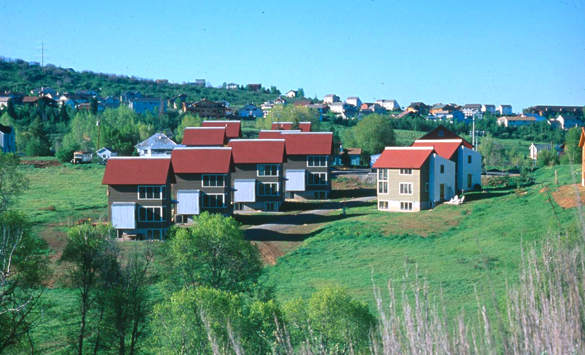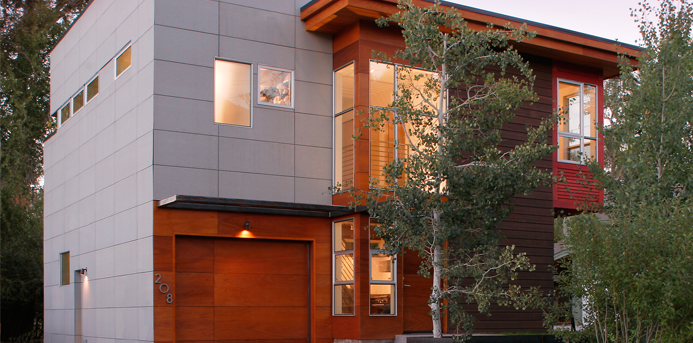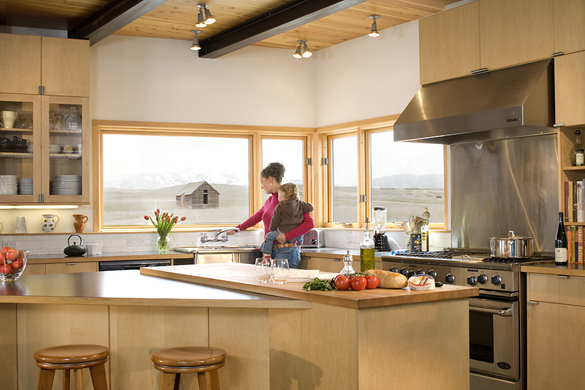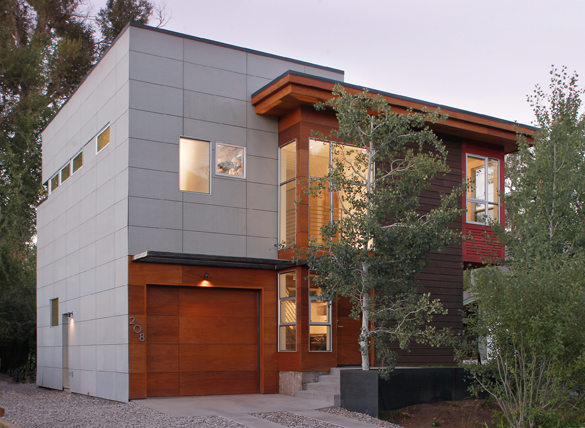It’s never too late or too hard to make a change for the better.
We asked Katherine Kiefer, native Midwesterner and principal of West Elevation Architects in Steamboat Springs, Colo., for some common sense ideas on how to become more environmentally friendly on the homefront.
1. Add a dimmer light switch
Just dimming a halogen light by 10 percent will save you an average of $10 a year. Given that a dimmer switch lasts 10 years, that’s a simple payback of $100. Multiply that by all the switches in your home and the cost and energy savings is significant.
Better yet, just turn your lights off. Today’s high-tech, motion-sensing switches are ideal for closets, the garage, bathrooms and bedrooms—any room where you tend to leave the lights on long after you’ve left.
2. Use the sun
Whether you’re designing a new home or staying in your current one, put the sun to use. The sun shines higher in the summer and lower in the winter. Use overhangs and eaves to screen the hot, summer rays and allow them to penetrate your home in winter.
Consider window placement. Having operable windows on at least two sides of every room allows for ample daylight and improves cross ventilation and airflow in warmer months.
And don’t forget to dress your windows wisely. There are a myriad of window-shading options that allow for a view while reducing heat from the summer sun and preventing heat loss on cold winter nights.
3. Plant smarter
Get a truly green thumb. Plant deciduous trees on the south side of your home (with leaves that fall in the winter) to screen the hot sun in summer and allow warming rays in winter. Choose flowers and shrubs that are native to your zone and require less water. Use shade to your advantage and keep the lush, thirsty plants out of the harsh, moisture-sucking sun. Install a rain barrel or two for watering pots and flowerbeds. Above all, learn how to use your programmable sprinkler system. Don’t be that neighbor who waters her grass during a torrential rainstorm.
4. Source locally and responsibly
This rule applies to building materials as readily as food. The farther a product has to travel, the more energy is consumed. For example, a stainless-steel counter is readily available nationwide and contains a high recycled content versus a non-renewable marble sourced abroad.
Check out the U.S. Green Building Council’s website for their free guide and great ideas for going green at home.
Remember, products made in America don’t have to be shipped across the sea. And sometimes you have to spend more upfront to save money long-term on maintenance and operating costs.

Idaho Granite was chosen for the exterior of the home, in part because of it’s proximity to Colorado and the reduced transportation costs associated with getting it to the job site. Photo by Robyn M. Rosenblatt as Design Architect, West Elevation Architects as Architect of Record.
5. Clear the air
Simple things like changing your air filters regularly and scheduling annual maintenance can ensure the efficiency and output quality of your heating and cooling system. According to the Department of Energy, installing a programmable thermostat can save you up to 10 percent a year on heating and cooling costs—and it ensures you get the temperature right when you need it.
Consider sealing the leaks in your ductwork or adding insulation to keep warm air from leaking through your attic. Most importantly, check your radon levels. High radon concentrations are a significant health risk and its remediation is one of the simplest things you can do to ensure indoor air quality.
6. Buy or build only what you need
Modern living promotes open public rooms that flow together. Even if you live in an older home, eliminate the redundancies in your floor plan. Instead of adding on, repurpose what you have. Turn your dining room into a library or game room. The larger your square footage, the bigger your carbon footprint.

Ruby square: winner of the 2004 Mountain Living magazine “Responsible Development Award.” Built 10 homes: four at 980 square feet, two at 1,660 square feet and four at 1900 square feet in Steamboat Springs, Colo.
All work in photos by West Elevation



